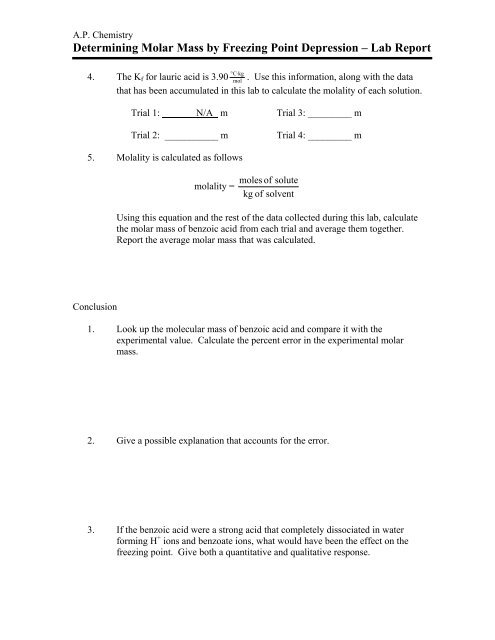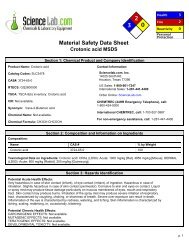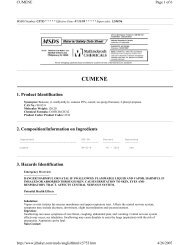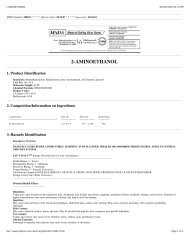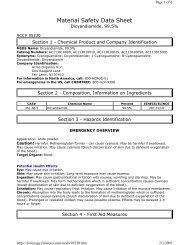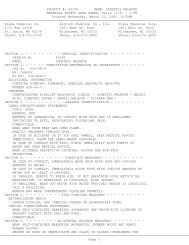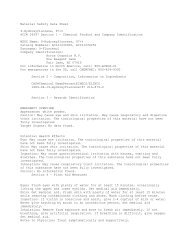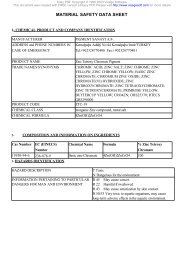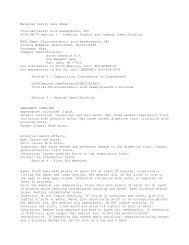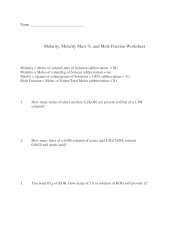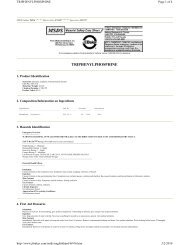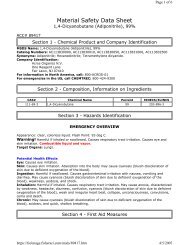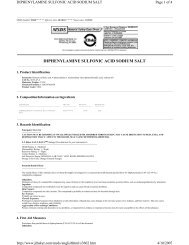Determining Molar Mass by Freezing Point Depression
Determining Molar Mass by Freezing Point Depression
Determining Molar Mass by Freezing Point Depression
Create successful ePaper yourself
Turn your PDF publications into a flip-book with our unique Google optimized e-Paper software.
A.P. Chemistry<strong>Determining</strong> <strong>Molar</strong> <strong>Mass</strong> <strong>by</strong> <strong>Freezing</strong> <strong>Point</strong> <strong>Depression</strong> – Lab Report°C⋅kg4. The K f for lauric acid is 3.90 mol. Use this information, along with the datathat has been accumulated in this lab to calculate the molality of each solution.Trial 1: N/A m Trial 3: _________ mTrial 2: ___________ mTrial 4: _________ m5. Molality is calculated as followsmolality =moles of solutekg of solventUsing this equation and the rest of the data collected during this lab, calculatethe molar mass of benzoic acid from each trial and average them together.Report the average molar mass that was calculated.Conclusion1. Look up the molecular mass of benzoic acid and compare it with theexperimental value. Calculate the percent error in the experimental molarmass.2. Give a possible explanation that accounts for the error.3. If the benzoic acid were a strong acid that completely dissociated in waterforming H + ions and benzoate ions, what would have been the effect on thefreezing point. Give both a quantitative and qualitative response.


